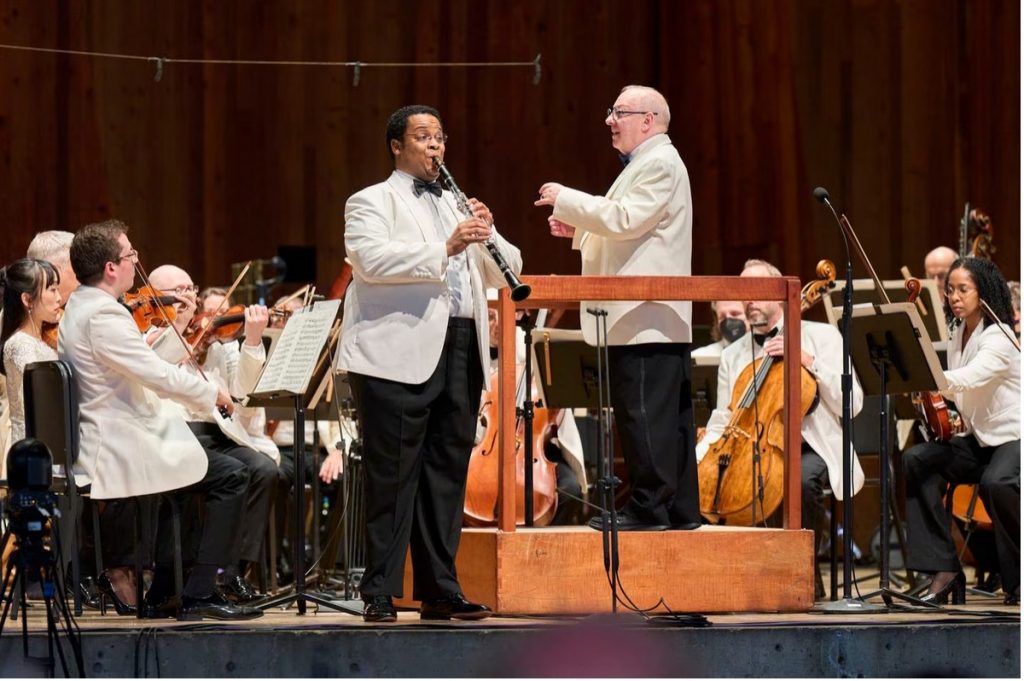This article was originally published on Cleveland.com
(Photo: Roger Mastroianni)
By Peter Feher
CUYAHOGA FALLS, Ohio — In a playful twist, this summer’s all-Mozart program at Blossom Music Center featured a couple of pieces that weren’t by Mozart.
Call it counterintuitive, but The Cleveland Orchestra’s concert on Saturday, Aug. 12 stayed true to the spirit of this singular composer. The traits that typify Mozart’s style — a combination of instant charm and endless resourcefulness — were also the qualities that brought together the entire evening.
Of course, having an expert interpreter on the podium didn’t hurt either. Guest conductor Nicholas McGegan, a specialist in period performance and the former longtime music director of San Francisco’s Philharmonia Baroque Orchestra, kept a masterfully light touch throughout, letting both the repertoire and the players shine for themselves.
That was the natural approach to take with the star piece on the program, Mozart’s Clarinet Concerto. Cleveland Orchestra audiences are used to principal clarinet Afendi Yusuf stealing the show from his seat in the ensemble, though familiarity didn’t make this weekend’s debut any less exciting. In his first concerto appearance since joining the Orchestra in 2017, Yusuf gave an artful, authoritative account of a work every clarinetist knows inside and out.
Like many benchmark pieces, Mozart’s Clarinet Concerto was written at a moment of innovation. The clarinet was still finding its limits and coming into its own as an orchestral instrument at the end of the 18th century. You wouldn’t have guessed this, however, from the ease with which Yusuf navigated the extremes of his solo part, starting with the many-octave-spanning passagework of the first movement.
The modern challenge is making the concerto sound fresh again, and Yusuf succeeded in putting a personal stamp on the piece. He drew listeners into the emotion of the Adagio, playing long stretches of the movement barely above the level of a whisper, and then went all out in the extroverted technique of the finale.
Two very different updates to Mozart introduced each half of Saturday’s program. The evening started traditionally enough, with McGegan leading a historically-minded reading of the composer’s Overture to The Marriage of Figaro and reinvigorating the accents and gestures that can lose shape in other performances.
Read the rest of the article




